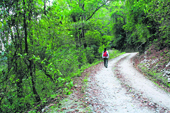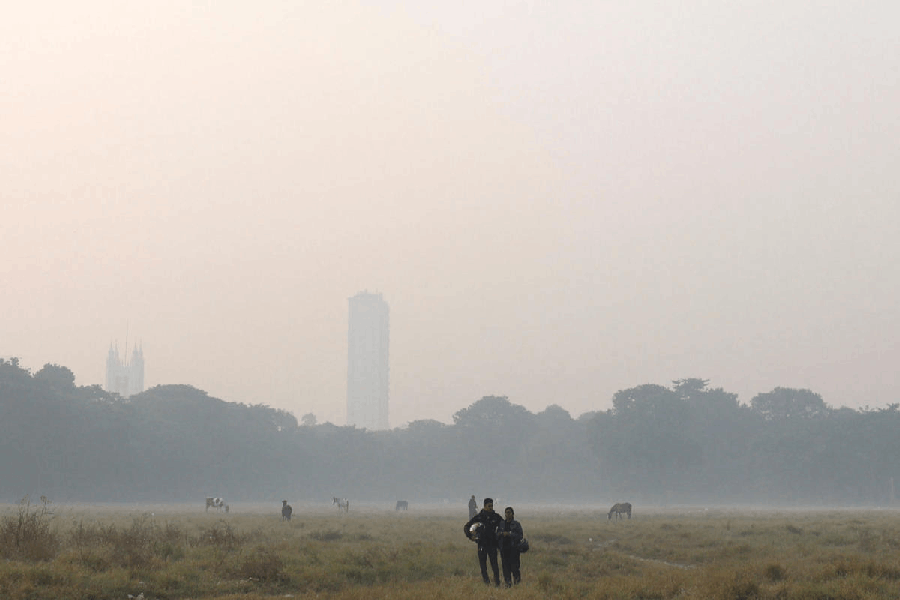 |
The trip to Chuikhim in North Bengal was unlike any other. I started from New Jalpaiguri by road and took a sharp left turn from National Highway 31 at Bagrakote, entering the Bagrakote tea garden. Soon I crossed the railway line that goes to Alipurduar from Siliguri. On both sides of the asphalt road lay undulating tea plantations interspersed with shade trees. I drove past wooden quarters of the tea garden staff, which looked like doll’s houses, a bustling bazaar and roadside taps where women were filling their buckets — quintessential scenes of a town.
The road leads to the bank of the Lees river, but I didn’t go that far. At Chunabhati, I took another turn and entered the Chel forest.
From this point, the stone-paved track became rough. Only tough jeeps can weather its bumpy ride. The next 12km-stretch till Chuikhim passes through the forest.
Chuikhim is situated at a height of 3,500ft. As the jeep gradually gained height, on my right I could see the serpentine Lees riverbed lying below. The call of crickets is all pervasive here, even drowning the purr of the jeep’s engine.
Both sides of the road were dotted with tagar plants with milk-white blossoms.
Abruptly, the jeep stopped below a hamlet. I had reached Chuikhim, a quaint little mountain village of 250 families where a unique endeavour, Support Himalayan Agro Rural Enterprise (SHARE), has started community-based tourism. The experiment is led by Prasant Mullik, an unassuming youth in his thirties.
In Chuikhim, tourists are put up in the homes of the villagers. With the help of SHARE villagers are building toilets, meeting minimum medical needs through healthcare facilities and getting education. The villagers have miles to go and many more dreams to fulfil, but a beginning has been made.
I am a guest at the home of Pabitra Bhuzal, a young woman who lives with her brother.
 |
The guesthouse has two sections — one big room and a smaller one with windows that look down on the valley below, where the Lees river flows. The house is clean and cheerful. It can accommodate five-six guests. A similar house, about 500m up on the southern slope, can accommodate four guests.
The house I stay in is on the eastern end of the village on a hillock with a cluster of pine trees as the backdrop. Surrounded by mountains, one can see the entire village lying below in different slopes of the green valley with terraced cultivation. The valley slopes down west to meet the Lees river.
The first thing one notices about Chuikhim is its peace and calmness. There is a sweet fragrance in the gentle breeze that blows across the hills. The silence is broken only by bird calls. It is extremely relaxing.
In the afternoon, after a hearty meal of rice, chapati, vegetables and chicken followed by a good nap, I sat on the lawn and listened to birds. The sun set behind the mountain, lighting up the western sky in crimson red. Darkness descended. I sat mesmerised.
The best season to visit Chuikhim is October-November or March-April.
Visitors can trek in and around the village and through the Chel forest. There are excellent opportunities for bird watching. One can visit Lolegaon (23 km) and Samtahar (25km) from Chuikhim.
September 27 is celebrated as Tourism Day every year, with an inter-village football tournament, folk dance competition and cultural shows.
Going
Nearest railway station and airport are New Jalpaiguri and Bagdogra.
Hire a jeep from NJP/Bagdogra or Bagrakote. One-way fare from NJP to Chuikhim is Rs 1,500.
Staying
Limited number of cottages available, so book in advance. Charges per person: Rs 500 per day, including meals.
For reservations and enquiry contact 9433003080, and 9933312012.
Email: chuikhim@rediffmail.com nest.kolkata@gmail.com











